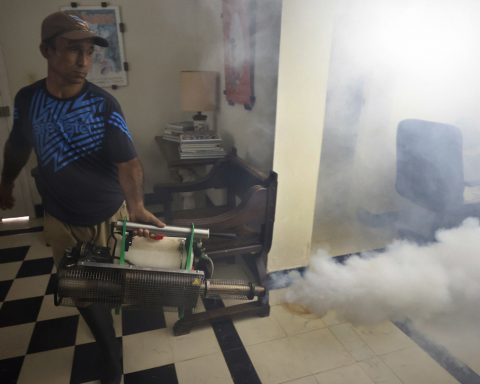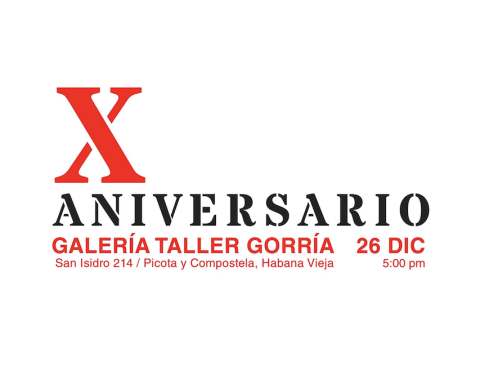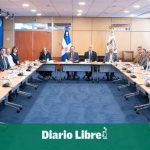The fragile ecosystem of the islands is incompatible with electricity generation, based on fuels such as diesel.
The Galapagos Islandsconsidered one of the most important natural heritage of Ecuador and the world, have depended for decades on the electricity more expensive and polluting.
In San Cristóbal, up to 85% of the energy produced is thermal and depends on the consumption of thousands of barrels of diesel per day. Other sources, such as wind wave solaraverage 15%.
Every kilowatt hour of energy produced with sayl It can cost up to $0.50, because transportation and other logistics must be added. This value skyrockets if environmental liabilities (pollution levels and CO2 in the air) are taken into account. In addition, the risk of a repeat fuel spill, such as the one that occurred in 2001, always remains latent.
On that occasion, the cargo ship ‘Jessica’ ran aground in San Cristóbal and spilled more than 150,000 gallons of diesel and bunker on the reef and the waters of Naufragio Bay, in front of Puerto Baquerizo Moreno.
That disaster was the first shock that raised alerts about the need to bet on the renewable energy so as not to irreversibly damage the fragile ecosystem of the Islands. In recent years there have been more than a dozen minor incidents.
Antonio Velásquez, an electrical engineer, commented that at the beginning of the Correa government, in 2008, a wind project was inaugurated in San Cristóbal. Then, plans that included having 50% renewable sources until 2015 they did not materialize.
“There have always been big businesses behind the transportation of fuels. Also, with fuels subsidized, for many years the projects of renewable energy for considering them more expensive,” he said.
Velásquez pointed out that it is true that the cost of a kilowatt hour of a photovoltaic plant (solar energy) can average between $0.42 and $0.47; but that is offset by positive externalities such as less pollution. The true economic engine of Galapagos is tourism, which needs the least possible environmental damage to be sustained over time.
It should be added that, in the current context of high oil prices, the thermal energy it gets expensive fast.
The cheapest energy in Ecuador (around $0.09) is that generated in hydroelectric plants; but Paulina Villlalba, an electrical engineer, stressed that she bets on the other renewable energy is every time a best business in the medium and long term.
The Conolophus Initiative
In August 2021, the development of the conolophus project to the consortium formed by the Ecuadorian developer Gransolar and the French renewable energy company Total Eren.
This work will increase the supply of electricity generation, through sources of renewable energy, up to 70% and will reduce imports and consumption of diesel at approximately 1.6 million barrels per year.
The Vice Minister of Electricity, Gabriel Argüello, explained that the cost per kilowatt hour is higher than the cheapest options; but in no case is it 30 times higher. Likewise, he pointed out that the consortium, which will invest $63 million and bear all operating expenses for 25 years, has committed itself to more than just installing solar panels.
The Conolophus initiative has six main components: Construction on Baltra Island of a 14.8 Megawatt (MW) Photovoltaic Plant, establishment of two BESS battery storage systems of 33.9 and 7 MW capacity, installation of transmission circuits and substations, among others.
The Ministry of Energy ensured that everything was tendered in a transparent and competitive manner. In addition, the project is aligned with the “Zero fuels Fossils in the Galapagos Islands”, which sets as its objective the progressive reduction of the use of petroleum derivatives in the electricity generation.
The Ecuadorian company Gransolar has been managing two photovoltaic plants (Salinas and Tren Salinas) for more than six years, which are located 5 kilometers from the Salinas Urcuquí road, in the province of Imbabura.
Other companies such as Canadian Solar Conolophus, the French developer Voltalia SA, the Norwegian solar developer Scatec and a consortium led by the South Korean company Woojin Industrial Systems and the Australian battery manufacturer participated in the public tender (prior to the award of the project in the Galapagos). EnergyFlex. (JS)
Las Islas Galápagos están ubicadas a 1.000 km de la costa de Ecuador, en el Pacífico sur. Los costos de transporte de combustibles son altos.
El proyecto Conolophus ocupará 20 hectáreas y generará 23 Gigavatios de energía eléctrica al año.















